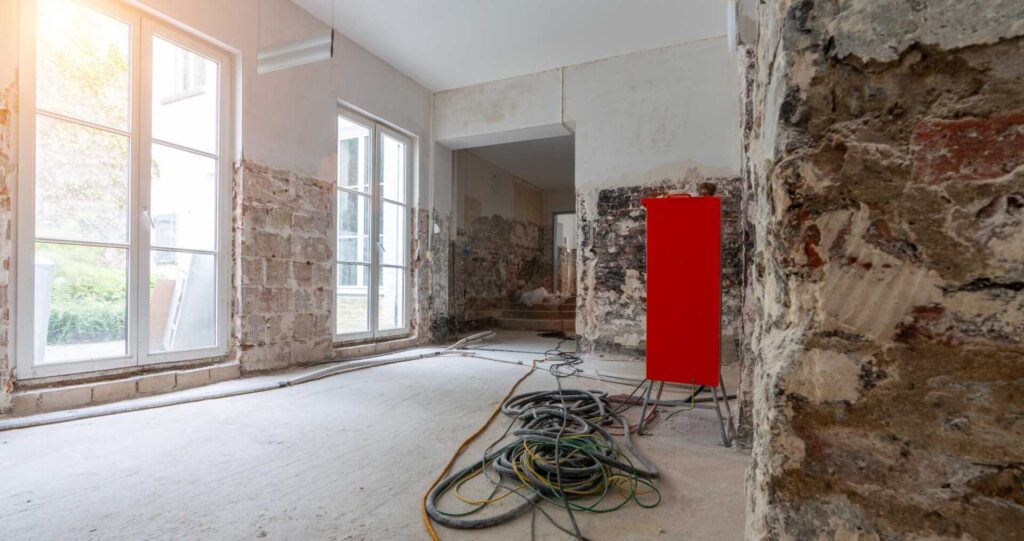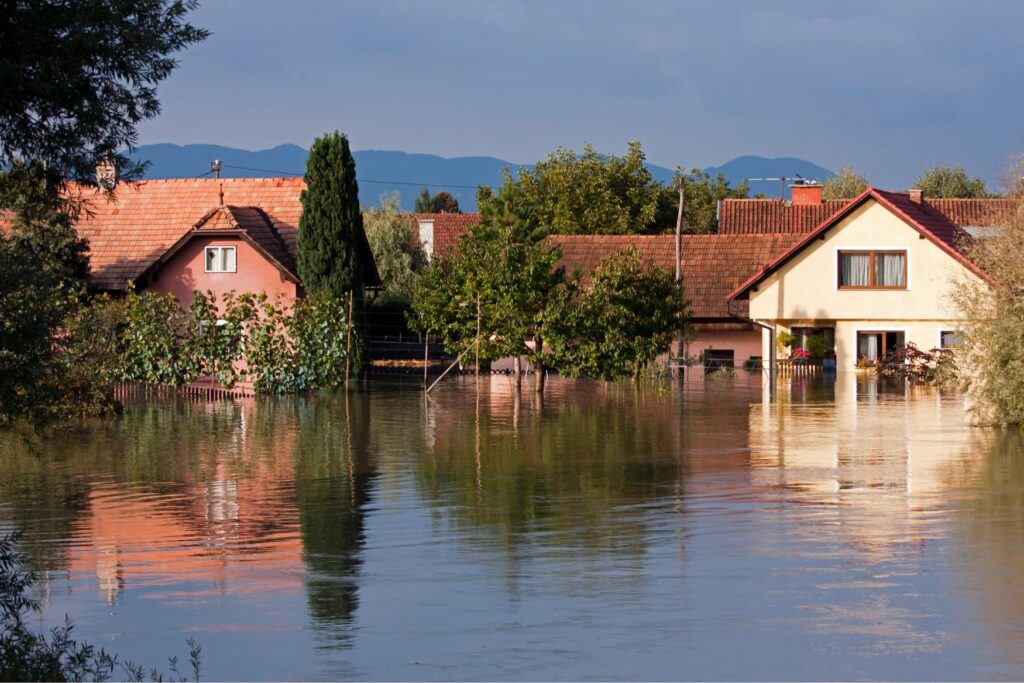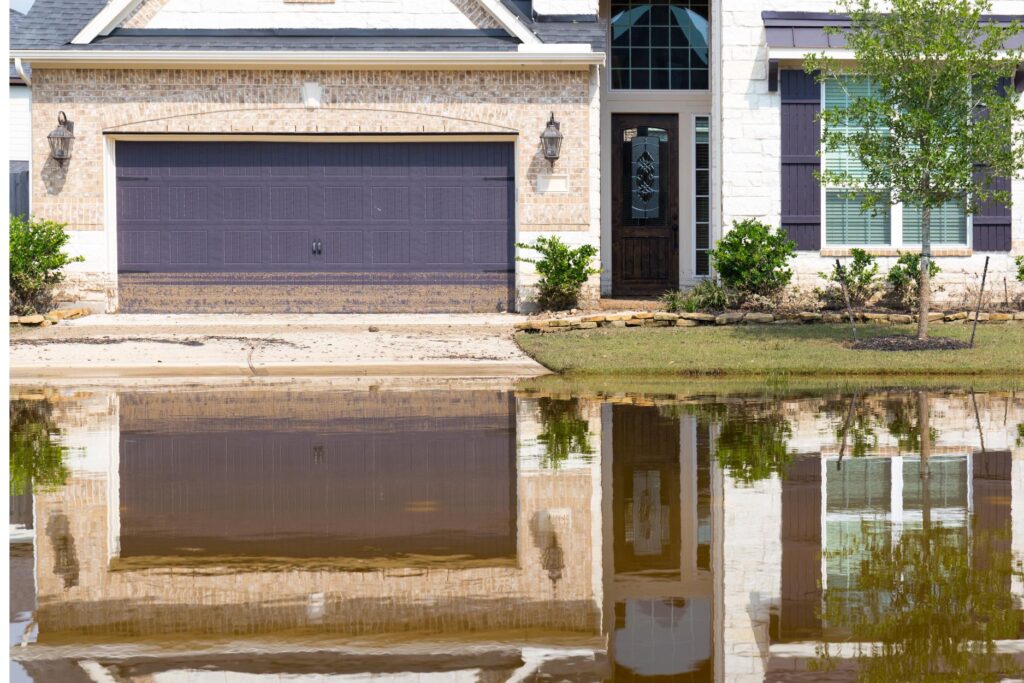Contents
When faced with water damage, you need a dependable guide to navigate the restoration process effectively. Understanding the essential steps involved in water damage repair can make all the difference in salvaging your property. But why should you trust this specific guide? The answer lies in its thorough approach that addresses immediate concerns and ensures long-term property protection. By following this guide, you are repairing the visible damage and protecting against concealed threats that could worsen if ignored.
Importance of Water Damage Restoration
When it comes to dealing with water damage, timely restoration is crucial for reducing further harm to your property. The importance of water damage restoration can’t be emphasized enough. Acting promptly can prevent structural damage, mold growth, and potential health hazards.
Water damage can weaken the foundation of your home, compromise its structural integrity, and lead to costly repairs if left unattended. By promptly restoring the affected areas, you can minimize the extent of the damage and preserve the value of your property.
Water damage restoration involves a series of steps to assess, mitigate, and repair the affected areas. Professional restoration experts have the knowledge, experience, and equipment to handle water damage effectively. They can quickly remove standing water, dry out the affected areas, and restore your property to its pre-damaged condition.
From identifying the source of the water damage to implementing drying techniques, restoration professionals follow a systematic approach to ensure comprehensive restoration.
Understanding Water Damage Categories
When it comes to water damage, understanding the categories is essential in determining the level of contamination and appropriate restoration steps. Categorizing water damage helps professionals assess the risks involved and tailor their response accordingly. Being aware of the health risks associated with different water damage categories is necessary for ensuring a safe and effective restoration process.
Water Damage Categories Defined
Understanding water damage categories is vital when dealing with water-related issues in your home or property. Water damage is categorized into three main categories based on the level of contamination and source of water intrusion:
Category 1 (Clean Water): This category involves water that originates from a clean source, such as a broken pipe or faucet. It poses no substantial risk to humans if consumed or exposed to the skin.
Category 2 (Grey Water): Grey water contains some level of contaminants and can cause discomfort or illness if ingested. This type of water may come from sources like dishwashers, washing machines, or sump pump failures.
Category 3 (Black Water): Considered highly unsanitary, black water contains harmful bacteria and other pathogens. It can cause severe illness or even death if consumed. Examples include sewage backups, flooding from rivers, and water from the toilet bowl with feces.
Knowing how to identify these categories is essential for effective water damage mitigation and restoration efforts.
Importance of Categorization
By categorizing water damage into distinct groups based on contamination levels and water sources, you lay the foundation for a strategic and effective approach to addressing and resolving the issues at hand. Understanding the significance of categorization is pivotal in determining the severity of the damage and the necessary actions to mitigate it.
Group 1 water damage involves clean water from a sanitary source, like a broken pipe. This group poses the least risk to your health.
Group 2 water damage consists of slightly contaminated water that could cause discomfort or illness if ingested, such as water from a dishwasher or washing machine.
Group 3 water damage is highly unsanitary water containing dangerous contaminants that can lead to severe illness or even death, like sewage backup.
Properly grouping the water damage enables you to prioritize safety measures, choose appropriate cleaning methods, and secure a thorough restoration process, ultimately creating a healthier environment for you and your loved ones.
Health Risks Associated
To understand the potential health risks connected with water damage, it’s vital to explore the different categories that define the level of contamination present in the affected area. Water damage is categorized into three levels based on the source and level of contamination:
Category 1 (Clean Water): This category involves water from a clean source, such as a broken pipe or overflowing sink. While this water is considered clean initially, it can become contaminated if left untreated.
Category 2 (Grey Water): Grey water contains significant contaminants that can cause illness if ingested. This includes water from appliances like dishwashers or washing machines.
Category 3 (Black Water): Black water is highly unsanitary and contains dangerous bacteria and fungi. This category includes sewage backups and water from natural disasters.
Understanding these categories is essential as they determine the appropriate safety measures and cleanup procedures needed to mitigate health risks associated with water damage.
Assessing the Extent of Damage
When it comes to water damage repair, evaluating the extent of damage is essential for effective restoration. Through thorough inspection and assessment, you can determine the seriousness of the water damage and plan the necessary steps for repair.
Understanding the water damage categories will help you classify the damage and prioritize areas that require immediate attention.
Damage Assessment Importance
Accurately measuring the extent of water damage is a vital step in the repair process. By evaluating the damage thoroughly, you can determine the best course of action to restore your property effectively. Here’s why damage evaluation is important:
Identifying Concealed Damage: Water can seep into unseen areas, causing structural issues over time. A thorough evaluation helps uncover these concealed damages before they escalate.
Determining Restoration Requirements: Understanding the full extent of damage allows you to prioritize repairs and allocate resources efficiently. This helps in ensuring that all necessary repairs are addressed promptly.
Preventing Future Issues: By evaluating the damage accurately, you can identify potential risks and take precautionary measures to avoid future problems. This proactive approach can save you time, money, and stress in the long run.
Evaluating the extent of water damage enables you to make informed decisions and safeguard your property from further harm.
Inspection and Evaluation
Thoroughly examining the water-damaged areas in your property is an important task in the restoration process. When gauging the extent of water damage, start by inspecting all affected areas. Look for visible signs such as water stains, discoloration, peeling paint, or warped surfaces. Additionally, pay attention to any musty odors, as they can indicate hidden moisture.
Use a moisture meter to detect water levels in walls, floors, and ceilings that may not be visible to the naked eye.
Evaluate the damage by categorizing it into levels of severity. Minor damage may only affect a small area and require minimal repairs, while major damage can impact structural integrity and necessitate extensive restoration work.
Document the damage with photographs and detailed notes to assist with insurance claims and restoration planning. By thoroughly inspecting and evaluating the water damage, you can better understand the scope of the restoration needed to bring your property back to its pre-damaged condition.
Understanding Water Damage
To truly understand the impact of water damage on your property, it’s important to accurately assess the extent of the damage. Understanding the severity of water damage is pivotal in determining the necessary steps for effective restoration. Here’s how you can assess the extent of water damage:
Inspect the Affected Areas: Carefully examine all areas where water has infiltrated, including walls, ceilings, floors, and belongings.
Check for Signs of Mold and Mildew: Mold and mildew can quickly develop in damp environments, indicating prolonged exposure to water. Look for any visible signs of mold growth.
Assess Structural Integrity: Water damage can compromise the structural stability of your property. Check for any warping, sagging, or other structural issues that may have arisen due to water exposure.
Implementing Water Extraction Techniques
When addressing water damage, one vital aspect to keep in mind is the effective utilization of water removal techniques. Proper water elimination is essential in preventing further harm to your property and belongings. To begin, ensure your safety by turning off all electricity in the affected areas before starting the removal process.
Start by eliminating standing water using a wet/dry vacuum or a pump. Work your way from the highest point of the room towards the lowest point to make certain all water is removed efficiently. Pay special attention to areas where water tends to accumulate, such as corners and crevices.
After eliminating the standing water, use towels or mops to absorb any excess moisture from surfaces like floors and walls. Open windows and doors to increase ventilation and aid in the drying process. If possible, use dehumidifiers to reduce humidity levels, which can help prevent mold growth.
Remember to check hidden areas, such as under carpets and inside walls, for remaining moisture. Thoroughly dry these areas to prevent mold and mildew from forming. By implementing these water removal techniques promptly and effectively, you can minimize the extent of water damage and protect your home and belongings.
Drying and Dehumidification Process
Now, turning to the next step in the water damage repair process, we come to the pivotal aspect of the Drying and Dehumidification Process. Properly drying and dehumidifying the affected areas is vital to prevent further damage and mold growth. Here are some key points to take into account:
Air Movement: Utilize fans and open windows to promote air circulation, aiding in the drying process.
Dehumidification: Use dehumidifiers to remove excess moisture from the air, accelerating the drying of surfaces and materials.
Monitoring: Regularly check moisture levels in the air and affected areas to make sure that the drying process is effective and complete.
During the drying and dehumidification process, it’s essential to be thorough and patient. Rushing through this step can lead to lingering moisture, which may result in mold growth and structural issues. By following these guidelines and allowing sufficient time for the affected areas to dry completely, you can help ensure a successful water damage repair process. Remember, thorough drying is the key to preventing further damage and restoring your space to its pre-damaged condition.
Preventing Mold Growth and Restoration
Properly addressing mold growth concerns and initiating the restoration process is pivotal in completing the water damage repair effectively. Mold thrives in damp environments, making it vital to act promptly after water damage occurs. To prevent mold growth, start by thoroughly drying all affected areas within the first 24-48 hours.
Use dehumidifiers and fans to increase air circulation and aid in the drying process. Additionally, remove any wet or damaged materials that can’t be salvaged, as they can harbor mold spores and promote its growth.
Once the affected areas are dry, it’s time to commence the restoration process. This involves repairing or replacing any damaged structures, such as walls, flooring, or insulation. It’s important to sanitize and disinfect the area to kill any remaining mold spores and prevent future growth. Consider using mold inhibitors or sealants to further safeguard against mold regrowth.
Seeking professional help for mold remediation and restoration is highly recommended to ensure thorough and effective treatment. Professionals have the expertise and equipment to properly assess the extent of the damage, safely remove mold, and restore the affected areas to their pre-damaged condition. By following these steps and enlisting professional assistance, you can effectively prevent mold growth and restore your property after water damage.
Review
By following this water damage repair guide, you can navigate the murky waters of restoration with ease. Think of it as a lifeline to your property, guiding you through the treacherous sea of damage and leading you toward a safe harbor of restoration. With each step carefully outlined, you can steer clear of disaster and sail smoothly toward a restored and revived property. Trust in this guide, the beacon of hope in the storm of water damage.




